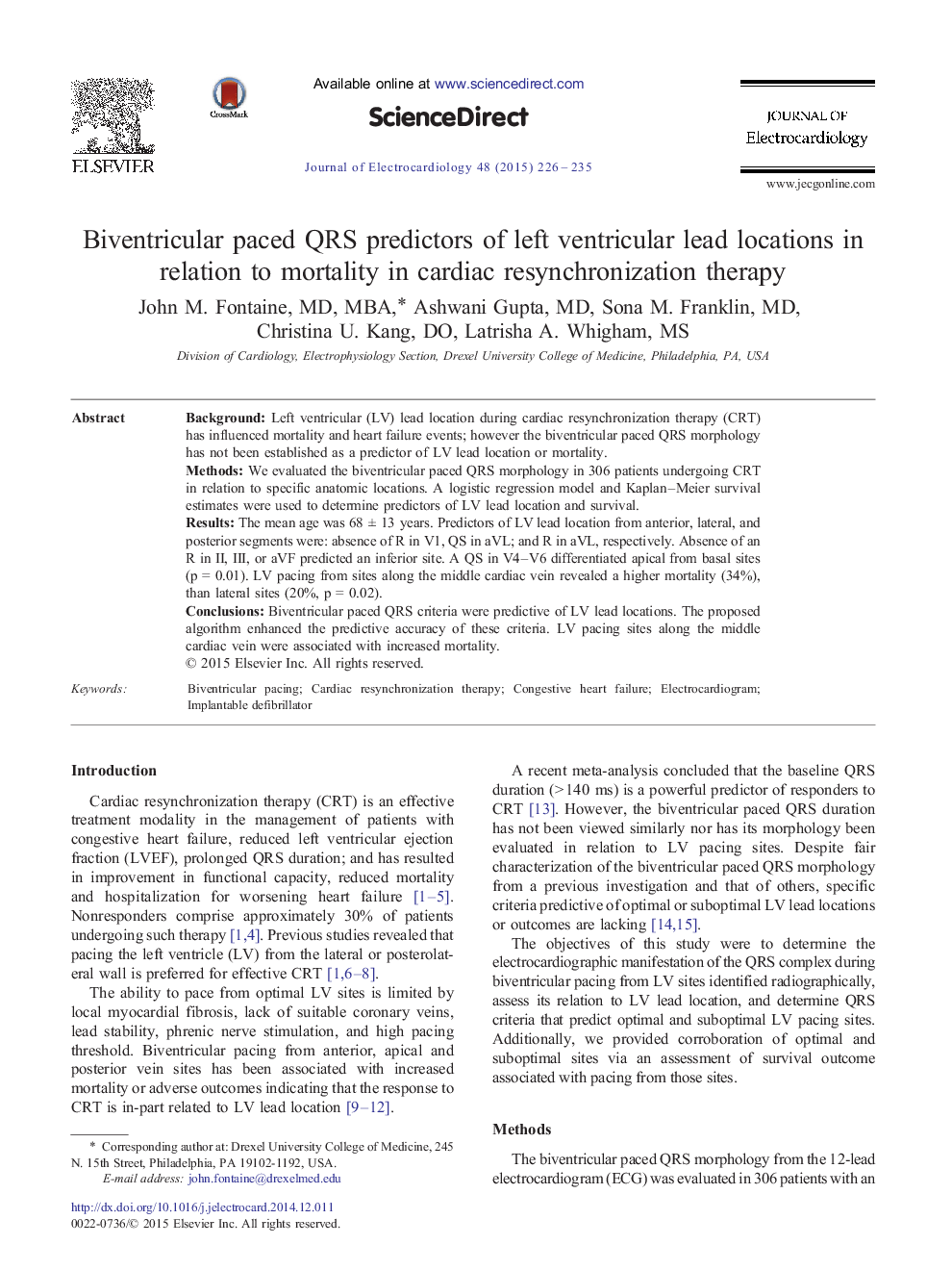| Article ID | Journal | Published Year | Pages | File Type |
|---|---|---|---|---|
| 5986561 | Journal of Electrocardiology | 2015 | 10 Pages |
•The biventricular paced QRS identifies LV pacing from optimal and suboptimal sites.•Suboptimal LV pacing sites are associated with increased mortality.•Pacing sites along the middle cardiac vein are not late activated and suboptimal.•The proposed algorithm enhances the accuracy of biventricular paced QRS criteria.
BackgroundLeft ventricular (LV) lead location during cardiac resynchronization therapy (CRT) has influenced mortality and heart failure events; however the biventricular paced QRS morphology has not been established as a predictor of LV lead location or mortality.MethodsWe evaluated the biventricular paced QRS morphology in 306 patients undergoing CRT in relation to specific anatomic locations. A logistic regression model and Kaplan–Meier survival estimates were used to determine predictors of LV lead location and survival.ResultsThe mean age was 68 ± 13 years. Predictors of LV lead location from anterior, lateral, and posterior segments were: absence of R in V1, QS in aVL; and R in aVL, respectively. Absence of an R in II, III, or aVF predicted an inferior site. A QS in V4–V6 differentiated apical from basal sites (p = 0.01). LV pacing from sites along the middle cardiac vein revealed a higher mortality (34%), than lateral sites (20%, p = 0.02).ConclusionsBiventricular paced QRS criteria were predictive of LV lead locations. The proposed algorithm enhanced the predictive accuracy of these criteria. LV pacing sites along the middle cardiac vein were associated with increased mortality.
